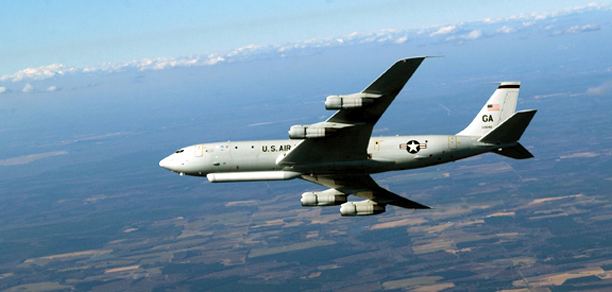Part of Air Combat Command | Role Air Control | |
 | ||
Active 1943–1945, 1953-1958, 2011- Branch | ||
The 461st Operations Group is a joint Air Force/Army unit flying the Northrop Grumman E-8 Joint STARS aircraft. The group is assigned to the 461st Air Control Wing of Air Combat Command and is stationed at Robins Air Force Base, Georgia. It was most recently activated on 1 Oct 2011.
Contents
The group was originally activated in 1943 as the 461st Bombardment Group (Heavy) as a World War II United States Army Air Forces combat organization. The highly decorated unit served primarily in the Mediterranean, African, and The Middle East Theater of World War II.
Later activated as a tactical bomber unit by Tactical Air Command in the 1950s, the group was designated the 461st Bombardment Group, Tactical.
Mission
The 461 OG is the only active duty Air Force unit operating the E-8C Joint Surveillance Target Attack Radar System (Joint STARS), an advanced ground surveillance and battle management system. Joint STARS detects, locates, classifies, tracks and targets ground movements on the battlefield, communicating real-time information through secure data links with U.S. Forces command posts.
World War II
The group was constituted in May 1943 as a B-24 Liberator heavy bombardment group and activated on 1 July at Wendover Field, Utah. It trained under II Bomber Command at several airfields in Utah, Idaho, and California, with group elements undergoing combat simulation training at the Army Air Force School of Applied Tactics in Florida.
The 461st deployed to the Mediterranean Theater of Operations (MTO) in February 1944, the air echelon flying B-24's via the South Atlantic transport route, stopping in North Africa before joining the ground echelon in Italy. It was assigned to the 49th Bombardment Wing of Fifteenth Air Force at Torretto Airfield, Italy, in late February.
The group began combat operations in April, engaging in long range strategic bombardment operations of Nazi Germany and Occupied Europe. It engaged chiefly in bombardment of communications, industries, and other strategic objectives in Italy, France, Germany, Czechoslovakia, Hungary, Austria, Romania, Yugoslavia, and Greece. It supported Fifteenth AF's counter-air operations by bombing enemy airdromes and aircraft centers, receiving a Distinguished Unit Citation (DUC) for a mission on 13 April 1944 when the group battled its way through enemy defenses to attack an aircraft components plant in Budapest. The 461st BG conducted Oil Campaign of World War II operations against Brux, Blechhammer, Moosbierbaum, Vienna, and Ploiești; receiving a second DUC for a July 1944 bombing of Ploiești despite flak, clouds, smoke, and fighters. Also operated in support of ground forces and flew some interdictory missions.
It hit artillery positions in support of the invasion of Southern France in August 1944 and flew supply missions to France in September. The group aided the Allied offensive in Italy in April 1945 by attacking gun emplacements and troop concentrations. After the German Capitulation, the 461st dropped supplies to prisoner-of-war camps in Austria during May 1945. During its operations in the Mediterranean, the group suffered 108 aircraft lost in combat, and was credited with the destruction of 129 enemy aircraft. It dropped over 13,000 tons of bombs in over 46,000 hours of combat flying.
The group was alerted for redeployment to the Pacific Theater in June 1945 and was programmed for Very Heavy bomber training with B-29 Superfortresses. The unit returned to the United States in July; many personnel being demobilized upon arrival. A small cadre formed at Sioux Falls Army Air Field, South Dakota and unit was awaiting new personnel and aircraft when the Japanese capitulation ended the Pacific War in August. The group was inactivated on 18 August.
Tactical Air Command
The unit was reactivated as the 461st Bombardment Group, Light and assigned to the 461st Bombardment Wing. It was initially equipped with World War II era B-26B Invader light bombers. This aircraft assignment was temporary until the unit received jet-powered Martin B-57 Canberras and moved to a permanent base at Blytheville AFB, Arkansas. After three years of service with the B-57s the group was inactivated at the beginning of 1958 as TAC reorganized under the dual deputy system and its squadrons were transferred directly to the wing.
Lineage
Components
Awards and Campaigns
Manual campaign table
